Cody Wilson
description: an American crypto-anarchist best known for promoting the 3D printing of firearms
11 results

Come and Take It: The Gun Printer's Guide to Thinking Free
by
Cody Wilson
Published 10 Oct 2016
—Jean Baudrillard CONTENTS PROLOGUE WikiLeaks, Solid Imaging, and Open Source PART I Wiki Weapon PART II Ministry of Defense PART III The Gun Printer PART IV Terror PART V Danger PART VI Jarhead Angel PART VII John PART VIII Modern Politics PART IX Dropping the Liberator PART X Old Street PART XI Who Does What to Whom PART XII Wine-Dark PART XIII Undetectable PART XIV REDACTED EPILOGUE Nine Months of Night About Cody Wilson PROLOGUE WikiLeaks, Solid Imaging, and Open Source At high summer, we gathered in Little Rock at the Peabody. By the evening the hotel’s signature ducks—four hens and a drake—would have already completed their twice-daily march from the rooftop penthouse to the lobby fountain, where they fluttered and splashed.
…
He cheerfully pressed a patch of gummy, printed chain mail into my hand and looked on expectantly, that I might pronounce its worth. “Ah! I want you to meet so many people. Let me go find Caleb, he’s working on his own encrypted networking protocol!” I sat awkwardly in a chair and watched Amir bound away. Hello, I must be going. “Are you Cody Wilson?” a tall man asked. Beside him, a young woman was filming me. “It’s wicked to meet you,” he continued. “I’ve always thought that if I moved to America, I’d get a . . . well, what’s that rifle? The tranq sniper rifle from Metal Gear Solid.” “The Mosin-Nagant?” I replied. “Mosin. That’s the one.
…
Shifting down the walk in blackened rags and rebozos, strapped into their packs all sun-bleached and dreadlocked and heavy with dust. Immortal destitutes, moving wholly apart. “Hello?” The voice on the other end drew me back in. “Look, I don’t know what you’re talking about. I just got it. Are you sure you mean to be calling me?” “Cody Wilson?” Roiled in the street, my face smearing sweat across the phone, I watched them pass. Like the living shades of the first—or last—men to ever try this country. One walked in busted boots the color of spent coal. Our eyes met. “You got a supervisor or something?” I asked, now frowning. “There’s definitely a mistake.”
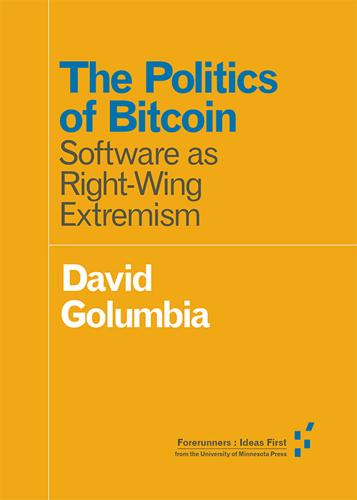
The Politics of Bitcoin: Software as Right-Wing Extremism
by
David Golumbia
Published 25 Sep 2016
The most fervent advocates of such strategies are open in their rejection of democratic governance: “‘We see this as part of the total sublation of the state,’ said Cody Wilson . . . who gained fame earlier this year when he published online the blueprints to a pistol that could be manufactured with a 3D printer. ‘I know I sound like some kind of weird Jehovah’s Witness, but we’ve only just begun. We admit that we are ideologues’” (Feuer 2013).[2] There was a time when it might have been relatively difficult to imagine a software platform that had more power as a politics than in its practical applications; it also used to be hard to imagine right-wing extremists like Cody Wilson being quoted as authoritative about anything in our nation’s leading newspapers.
…
The Future of Bitcoin and the Blockchain 1. For thoughtful and critical overviews of blockchain technology viewed separately from Bitcoin, see DuPont and Maurer (2015) and Grimmelmann and Narayanan (2016). Typically hype-filled presentations include Naughton (2016), Swan (2015), and Tapscott and Tapscott (2016). 2. For background on Cody Wilson and his promotion of 3D-printed guns, see Silverman (2013). 3. Some of the few exceptions to this rule in scholarship—political analysis that acknowledges the parallels or connections between Bitcoin discourse and far-right political beliefs—include Maurer, Nelms, and Swartz (2013), Payne (2013), and Scott (2014).
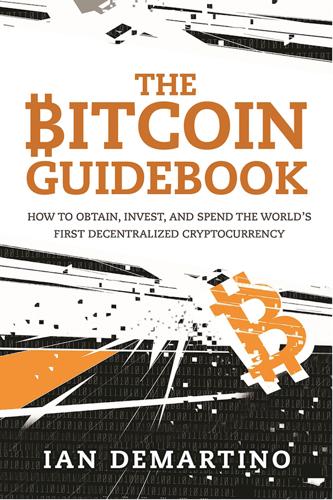
The Bitcoin Guidebook: How to Obtain, Invest, and Spend the World's First Decentralized Cryptocurrency
by
Ian Demartino
Published 2 Feb 2016
Amir Taaki: Dark Wallet co-creator and lead developer of Darkmarket, later forked to Open Bazaar. Peter Todd: Bitcoin core developer. Ross Ulbricht: Was accused and convicted of being Dread Pirate Roberts; his case is under appeal. Roger Ver: Angel investor and Bitcoin evangelist; CEO of Memorydealers.com, one of the first sites to accept Bitcoin, and founder of the company Blockchain. Cody Wilson: Dark Wallet co-creator and 3D-printed gun designer. Craig Wright: A recent addition to the search for Satoshi Nakamoto. Wired magazine recently reported he was “probably” the creator of Bitcoin (or wanted the world to think he was). In May 2016, he attempted to prove that he had created Bitcoin by signing a message using an account associated with Satoshi Nakamoto.
…
Although regulators and fearmongers have attempted to paint Bitcoin as a tool that destroys the status quo, the truth is that it is only reestablishing the status quo that has existed for thousands of years before electronic transactions ever took place. One of the most promising technologies in this specific niche of the Bitcoin ecosystem was Darkwallet, but it seems development has halted on the project as the developers ran out of money, despite having raised a lot of it. It is not currently in a usable state. Co-invented by Cody Wilson, the creator of the 3D-printed gun, and Amir Taaki, the creator of Darkmarket, Darkwallet is a decentralized mixing service. Both of its inventors have anti-authoritarian, pro-individual freedom histories and politics. Nevertheless, their projects shouldn’t be considered as radical as they are often painted by the mainstream media.
…
The documentary Deep Web, directed by Alex Winter, opens with a quote from OpenBazaar developer Amir Taaki: “The fascists, they have resources, but we have imagination. We are making the tools to take back our sovereignty.”7 The same sort of philosophy was behind the Silk Road. It also continues to motivate Brian Hoffman’s OpenBazaar, Cody Wilson’s 3D-printed gun, Darkwallet, and a dozen other tools that scare the shit out of people who have devoted their whole lives to upholding the status quo. The Silk Road was an unregulated marketplace and a gathering place for like-minded individuals, many of whom were true believers in the philosophy described by Amir Taaki in the Deep Web documentary.
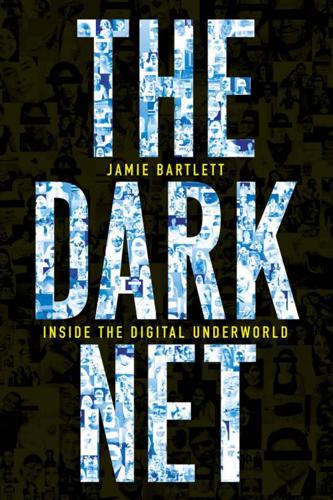
The Dark Net
by
Jamie Bartlett
Published 20 Aug 2014
Digging around the Bitcoin protocols, he noticed it wasn’t quite as secure and anonymous as everyone thought. It was a brilliant invention, of course, but with a few additions could be made even more subversive. That’s when he came up with the idea of Dark Wallet. He moved to Calafou, brought in Pablo alongside Cody Wilson – the American crypto-anarchist who created the first 3D printed gun – and together they raised $50,000 in a month via the crowdfunding site Indiegogo. Although Amir’s technical know-how and experience are admired, his ideals and motivations have put him on the fringes of what has become an increasingly respectable Bitcoin community.
…
I think people [like Amir] are going to be disappointed when it turns out that bankless money doesn’t actually create anarchy.’ Amir doesn’t care about this sort of talk. A tool to overthrow the System is precisely how he sees it. ‘People at the Foundation are trying to censor Bitcoin,’ he tells me. Both he and Cody Wilson have been on record stating they hope Dark Wallet will be used to buy drugs more securely, and that any negotiation with governments betrays Bitcoin’s vision. He fears its radical libertarian potential is being diluted. ‘The Bitcoin Foundation says, “Oh we need to make it better for the consumers.”
…
topic=169398.0 (some also blame him for the 2011 Bitcoinia controversy, when a Bitcoin trading exchange partly run by Amir was hacked and £145,000 in Bitcoins were stolen). p.90 ‘“We believe this is not in . . .”’ http://www.forbes.com/sites/andygreenberg/2013/10/31/darkwallet-aims-to-be-the-anarchists-bitcoin-app-of-choice/. p.90 ‘Both he and Cody Wilson . . .’ http://www.wired.co.uk/news/archive/2014-04/30/dark-wallet/. p.91 ‘Although he never attended a meeting . . .’ Levy, S., Crypto, pp.216–17. Akst, D., ‘In Cyberspace, Nobody Can Hear You Write a Check: Cash? History, The Evolution of Money is Moving Way Faster than the ATM Line. Guard Your Passwords’, LA Times, 4 February 1996.

The Age of Cryptocurrency: How Bitcoin and Digital Money Are Challenging the Global Economic Order
by
Paul Vigna
and
Michael J. Casey
Published 27 Jan 2015
With a large number of brainy techies in their midst, this rebellious faction went in search of new cryptographic tools to make it even harder for regulators to influence and control a decentralized bitcoin network. Their most radical solution was called Dark Wallet. The brainchild of an American crypto-anarchist named Cody Wilson and his Iranian British hacker colleague Amir Taaki, Dark Wallet is a “mixing” service. It takes transactions, breaks them into smaller pieces, and runs them through multiple wallets and addresses to create an indecipherable array of dense data. For Wilson, this meant being true to a philosophy of protecting privacy and reflected a deep desire to return bitcoin to what he saw as its core reason for being: an instrument of personal freedom.
…
Silbert also started building his own exchange: Michael J. Casey and Robin Sidel, “Firms Bank on a Bitcoin Bounceback,” Wall Street Journal, February 26, 2014. Their most radical solution: Danny Yadron, “Tech Renegade: From Print-at-Home Guns to Untraceable Currency,” Wall Street Journal, December 31, 2013. “A bunch of start-ups are coming in”: Cody Wilson, interviewed by Michael J. Casey, March 20, 2014. Elsewhere, Wilson was quoted describing it: Andy Greenberg, “‘Dark Wallet’ Is About to Make Bitcoin Money Laundering Easier Than Ever,” April 29, 2014, http://www.wired.com/2014/04/dark-wallet/. the Bitcoin Foundation’s chief scientist, called it “fantastic”: Kadhim Shubber, “Gavin Andresen: Rising Transaction Fees Could Price Poor out of Bitcoin,” CoinDesk, May 16, 2014, http://www.coindesk.com/gavin-andresen-rising-transaction-fees-price-poor-bitcoin/.
…
Gox and trust industries Turing Festival 20Mission Twitter Uber U-Haul Ulbricht, Ross Ultimate Frisbee unbanked people Unenumerated Unfair Trade, The (Casey) UnionPay Union Square Partners United Kingdom Utah utilities value: of bitcoins of coins of cryptocurrencies of dollar of gold intrinsic of money van der Laan, Wladimir Vaurum venture capitalists (VCs) Ver, Roger Verisign Verizon Vessenes, Peter VHS Virgin Group VirtEx Visa Vodafone Volabit Volcker, Paul Voltaire Voorhees, Erik voting Wall Street Wall Street Journal Walmart Washington State wealth bitcoin and Wealth of Nations, The (Smith) Web Designs WeChat Wedbush Securities Weill, Sanford Wei Dai Weimar Republic welfare state Wells Fargo Western Union Whelan, Jason Whelan, John WikiLeaks Wikipedia Willard, Rik William III, King Williams, Mark T. Wilson, Cody Wilson, Fred Winklevoss, Cameron and Tyler Wise, Josh Women’s Annex Wood, Gavin work World Bank Wright, Frank Lloyd Wuille, Pieter Xapo XIPH Foundation Xpert Financial XRP Y2K threat Yahoo Yang, Jerry Yap Y Combinator Yellen, Janet Yermack, David YouTube YTCracker Yunus, Muhammad ZeroBlock Zhang, Ng Zimbabwe Zimmerman, Phil Zobro, Jonathan Zoosk Zuckerberg, Mark Zug Also by Michael J.
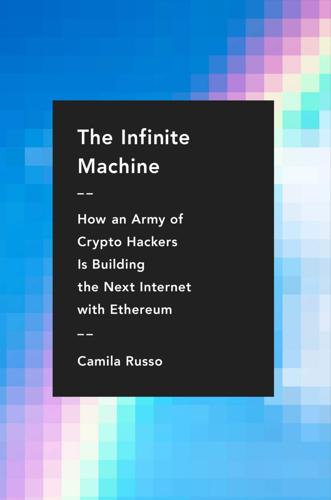
The Infinite Machine: How an Army of Crypto-Hackers Is Building the Next Internet With Ethereum
by
Camila Russo
Published 13 Jul 2020
At one point, Charles started testing him, drawing up one complicated math problem after another, and the nineteen-year-old Ethereum creator would instantly solve them in his head and spit them out. Gavin soon grew tired of this and continued to mingle, or at least try to. He was happy to see one face he recognized. It was Ashley Tyson, whom he had recently met through Yanislav. She had been helping launch a search engine for 3D-printable files with Cody Wilson, who founded a controversial nonprofit that develops 3D-printable gun designs, and got into Bitcoin after PayPal and banks suspended the startup’s accounts. She’d met Amir Taaki at a Bitcoin meetup in Berlin and started working with him and Cody on Dark Wallet, a Bitcoin application designed to make transactions more private.
…
Ethereum was item number two on the list, right after the Texas Bitcoin Conference in early March. “They’re doing an IPO in a few months,” her message continued. “It’s one of the most buzzed about things happening in the deep bitcoin community.” Ashley, who had been working with Amir Taaki and Cody Wilson on Dark Wallet, offered to introduce Ken to the Ethereum founders at the conference in March. The conference was at Austin’s race track, Circuit of the Americas. Some attendees joked that the location befit the cryptocurrency’s ups and downs, its false starts and surges. Booths displaying Bitcoin-themed art and hardware for mining coins shared the spotlight with a red Ferrari and a yellow Lamborghini parked by the track.

Radical Technologies: The Design of Everyday Life
by
Adam Greenfield
Published 29 May 2017
What a great many people in the world seem to want that the market cannot furnish them with is a gun—better yet, a gun that bears no serial numbers, appears in no database, and has absconded in every other way from the possibility of state regulation or control. This desire is particularly concentrated on the libertarian right, where fantasies of resistance to tyranny founded in mass arming of the population remain common currency.35 And among those trading in such currency is a young “crypto-anarchist” from Arkansas named Cody Wilson, who in 2013 released to the internet plans for a single-shot, 3D-printed pistol he called the Liberator. It’s an ugly thing, the Liberator, even by the aesthetic standards of contemporary handguns. But maybe it should be: a review by New South Wales police found it to be “undetectable, untraceable, cheap and easy to make.”36 They’d downloaded and assembled it themselves, at a total cost of $35 Australian, or roughly 5 percent of the retail price of a new weapon in the same caliber.
…
That you can perceive a need—possibly even a need not addressed by any existing artifact—and devise a response to it, locally, experimentally, iteratively. In the heady rush of enthusiasm for everything implied by these technologies, we need to avoid assuming that digital fabrication will transform the world automatically or magically. As the example of Cody Wilson illustrates, we need to remind ourselves over and over that by no means everyone who picks up this set of capabilities will be interested in using them to unweave kyriarchy. But neither are the technologies themselves really the point here. In everything I’ve described here, the act of production is—comparatively, and for all its many rigors—the easy bit.
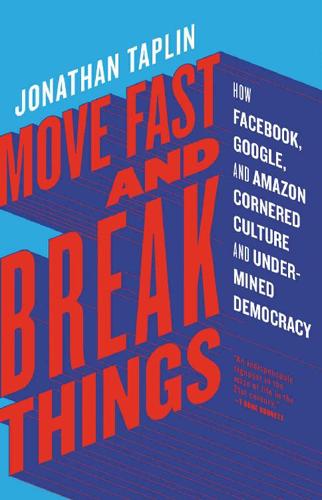
Move Fast and Break Things: How Facebook, Google, and Amazon Cornered Culture and Undermined Democracy
by
Jonathan Taplin
Published 17 Apr 2017
Searching the web for Ross Ulbricht led to a young man from Texas who, just like Dread Pirate Roberts, admired Ludwig von Mises and Ron Paul. Alford was pretty sure he had the proprietor of Silk Road, but it took him more than three months to convince the FBI that this was their man. Two months after Ross Ulbricht was arrested, the notorious cyberanarchist Cody Wilson, inventor of the world’s first 3-D-printed handgun, stood onstage in London at the MIT Bitcoin Expo and castigated his colleagues: “Ross Ulbricht is alleged to be the founder and operator of Silk Road, the glittering jewel of all things libertarian, black market, and wonderful. And it’s a severe indictment of the modern libertarian conscience that he can’t get any support at all.”

Future Crimes: Everything Is Connected, Everyone Is Vulnerable and What We Can Do About It
by
Marc Goodman
Published 24 Feb 2015
While the potential humanitarian benefits are enormous, it won’t be long before Crime, Inc. adapts these machines for meth, crack, and Oxycontin, vastly simplifying its supply chain and distribution issues. Perhaps one of the greatest controversies surrounding 3-D printers is the ability to produce firearms, and perhaps no man has done more to make that a reality than Cody Wilson, a twenty-six-year-old former law student, anarchist, and libertarian à la Dread Pirate Roberts. Wilson created the Wiki Weapon Project, brought us Darkwallet and its untraceable crypto currency, and founded Defense Distributed—a nonprofit online designer, publisher, and repository of firearms blueprints that can be downloaded and printed with a 3-D printer.
…
,” Forbes, March 6, 2012. 82 The Gartner group: Gartner, “Gartner Says Uses of 3D Printing Will Ignite Major Debate on Ethics and Regulation,” Gartner.com, Jan. 29, 2014. 83 Digital manufacturing will also be a boon: Drew Prindle, “KeyMe Joins Forces with Shapeways to Bring You Custom 3D-Printed Key Copies,” Digital Trends, Dec. 17, 2013. 84 There are apps too: Ann Givens and Chris Glorioso, “New Technology Could Let Thieves Copy Keys,” NBC New York, May 21, 2014. 85 In 2012, cops uncovered: Andy Greenberg, “Hacker Opens High Security Handcuffs with 3D-Printed and Laser-Cut Keys,” Forbes, July 16, 2012. 86 While the potential humanitarian benefits: Tim Adams, “The ‘Chemputer’ That Could Print Out Any Drug,” Guardian, July 21, 2012. 87 Wilson created the Wiki Weapon Project: Carole Cadwalladr, “Meet Cody Wilson, Creator of the 3D-Gun, Anarchist, Libertarian,” Guardian, Feb. 8, 2014. 88 The lower receiver: Andy Greenberg, “Here’s What It Looks Like to Fire a (Partly) 3D-Printed Gun,” Forbes, Dec. 3, 2012. 89 In May 2013: Andy Greenberg, “Meet the ‘Liberator’: Test-Firing the World’s First Fully 3D-Printed Gun,” Forbes, May 5, 2013. 90 Wilson’s efforts have left: Andy Greenberg, “How 3-D Printed Guns Evolved into Serious Weapons in Just One Year,” Wired, May 15, 2014. 316 These plastic firearms: Cheryl K.

Cloudmoney: Cash, Cards, Crypto, and the War for Our Wallets
by
Brett Scott
Published 4 Jul 2022
It was demolished in 1994, but he saw it as a symbol of unregulated human endeavour on the periphery of governed zones. These are the images lingering in the background when crypto hopefuls imagine a ‘land of the free’ in cyberspace. Could a ‘cyber-Kowloon’ be built, a parallel digital reality that you can slip into? The libertarian activist Cody Wilson frames Bitcoin exactly like this, when proclaiming that ‘Bitcoin is what they fear it is, a way to leave . . . to make a choice. There’s a system approaching perfection, just in time for our disappearance, so, let there be dark.’ Cody is drawing upon ‘dark market’ imagery, associated with the dark web, and made this statement while promoting a (now defunct) Bitcoin project called Dark Wallet.
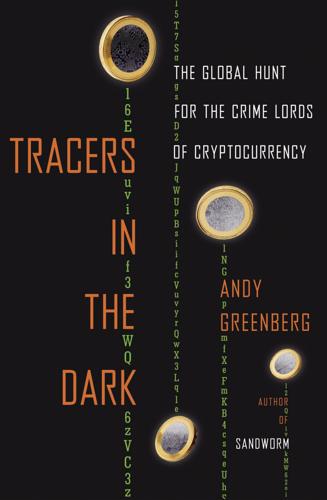
Tracers in the Dark: The Global Hunt for the Crime Lords of Cryptocurrency
by
Andy Greenberg
Published 15 Nov 2022
The 2011 Prague conference was keynoted, for instance, by Rick Falkvinge, the founder of the privacy- and information-freedom-focused Swedish Pirate Party, and a British anarchist programmer named Amir Taaki, who would later smuggle himself into Syria to fight ISIS alongside Kurdish revolutionaries. A London Bitcoin conference the next year featured a talk by the Texas radical libertarian Cody Wilson, who had used Bitcoin to fund his invention of the world’s first fully 3-D printable firearm, a futuristic symbol of the futility of gun control. At the follow-up event in late 2013, just weeks after the takedown of the Silk Road, Wilson gave another talk, this time a full-throated, defiant defense of the dark web’s drug trade.